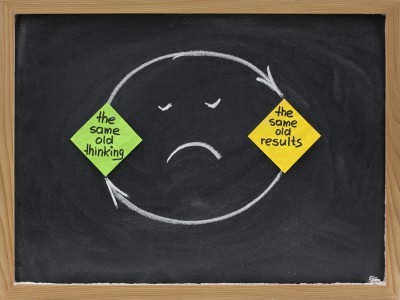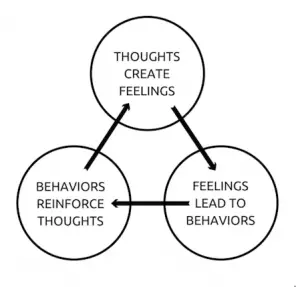DBT has become one of the most popular forms of conventional therapeutic treatment methods for patients suffering from mental disorders. Here’s a brief summary of what it is and how it works so you can decide whether to continue to explore this methodology as a therapy option for your teen.
What’s DBT? (stands for Dialectical behavior therapy):
An overview of DBT:
“DBT”, as it’s most commonly known, stands for Dialectical Behavior Therapy. It is a type of cognitive behavior therapy (see above for the definition of CBT). It involves a dual component process of:
- Acknowledging and accepting your current behaviors, and
- learning to change them.
The acceptance allows you to be present to your reality (helps you live in the “now”) versus thinking about or referencing the past. It also allows you to recognize what’s not working so you can work on changing it.
A large component of DBT involves a skill called “mindfulness” (covered in SECTION 5). This skill teaches you how to look at emotions and situations objectively and without judgement.
The accepting component also means not being frustrated about making mistakes as you learn to create new patterns of behavior.
Core skills taught by DBT:
There are four core skills taught in DBT, each one teaches how to choose how you will behave in a specific situation.
Mindfulness: Learning how to live from the present and be conscious of your feelings, thoughts and actions without be judgmental. Mindfulness is covered in greater depth in SECTION 5, but here is a quick example of what it means to be mindful: If you were being mindful right now your focus would be on reading the words on the page in front of you. You may also notice sounds and the temperature of your environment. You may notice your thoughts and how you are feeling about what you are reading. But, you only notice and don’t react to these various parts that make up your present experience right now at this moment.
Distress tolerance: Learning how to be non-reactive to stressful situations. It’s about learning how to tolerate versus change something that is uncomfortable. Allowing yourself to deal with momentary pain may help you achieve an outcome you actually desire. For example, a marathon runner who wants to win may have to tolerate physical and mental pain all the way to the finish line.
Interpersonal effectiveness: Learning how to interact with other people so you can maintain good relationships that involve mutual respect. Learning how to make requests and say no to the requests from others if and when you need to.
Emotion regulation: Learning which emotions serve you and which ones don’t; and how to shift them. Learning how not to immediately react to emotions without thinking about the consequences or the facts.
DBT involves a combination of four types of treatment:
Participants of DBT learn the tactics it teaches in three ways:
- Group training
- Individual therapy
- Phone coaching
Group therapy sessions typically run for 24 weeks to cover the entire DBT curriculum. Participants meet for one 2.5 hour session. The group therapy is taught in a similar style to a traditional classroom. An instructor teaches DBT concepts and assigns homework.
How DBT therapists are different than other therapists
DBT therapists also participate in therapy. They meet with other DBT counsellors in a group setting where they develop skills, get help from other therapists for their own patients and stay motivated.
The therapist is allowed to empathize with the patient. Which means, acknowledging what they are dealing with versus take on a role of being the expert and not expressing emotion (as is the case with some therapies). The alliance is based on a “tough love” type of principle. Much like a parent-child relationship, where the parent ensures that the child takes actions in line with what is good for them, even if they don’t want to.
The use of acronyms as teaching tool
DBT uses a great deal of acronyms to help participants easily learn and remember the new skills they’re taught. Here is an example of one of the acronyms. It is used to teach good interpersonal behaviors
The “GIVE” acronym:
GIVE: These skills are to be used in communicating with others. It helps you to be great with other people and make them feel comfortable when they speak to you.
- Gentle: Use appropriate language always. Do not verbally attack people. Don’t put them down even in frustrating situations. Be non judgemental in your communication with others.
- Interested: When the person you are speaking to is talking about something try your best to remain engaged. Listen to what they are saying. Show you are listening with your body’s cues. Make eye contact. Nod your head.
- Validate: Show your understanding by nodding your head or responding.
- Easy Manner: When you speak to people be relaxed. Smile and laugh.
